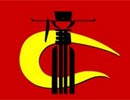2014年研究生入學考試已經結束,今年的考研英語真題,從命題形式來看,比較常規,沒有出現讓考生措手不及的情況反而讓考生稍感輕鬆。
Part B
Directions:
The following paragraphs are given in a wrong order. For Questions 41-45, you are required to reorganize into a coherent text by choosing from the list A-G and filling them into the numbered boxes .Paragraphs A and E have been correctly placed. Mark your answers on the ANSWER SHEET.(10 points)
[A] Some archaeological sites have always been easily observable—for example, the Parthenon in Athens, Greece; the pyramids of Giza in Egypt; and the megaliths of Stonehenge in southern England. But these sites are exceptions to the norm .Most archaeological sites have been located by means of careful searching, while many others have been discovered by accident. Olduvai Gorge, fell into its deep valley in 1911.Thousands of Aztec artifacts came to light during the digging of the Mexico City subway in the 1970s.
[B] In another case, American archaeologists Rene million and George Cowgill spent years systematically mapping the entire city of Teotihuacan in the valley of Mexico near what is now Mexico City .at its peak around AD 600, this city was one of the largest human settlements in the word. The researchers mapped not only the city’s vast and ornate ceremonial areas, but also hundreds of simpler apartment complexes where common people lived.
[C] How do archaeologists know where to find what they are looking for when there is nothing visible on the surface of the ground? Typically, they survey and sample (make test excavations on) large areas of terrain to determine where excavation will yield useful information. Surveys and test samples have also become important for understanding the larger landscapes that contain archaeological sites.
[D] Surveys can cover a single large settlement or entire landscapes.in one case, many researchers working around the ancient Maya city of Cop?n, Honduras, have located hundreds of small rural village and individual dwellings by using aerial photographs and by making surveys on foot. The resulting settlement maps show how the distribution and density of the rural population around the city changed dramatically between AD500 and 850, when Cop?n collapsed.
[E] To find their sites, archaeologists today rely heavily on systematic survey methods and a variety of high-technology tools and techniques. Airbone technologies, such as different types of radar and photographic equipment carried by airplanes or spacecraft, allow archaeologists to learn about what lies beneath the ground without digging. Aerial surveys locate general areas of interest or larger buried features, such as ancient buildings or fields.
[F] Most archaeological sites, however, are discovered by archaeologists who have set out to look for them. Such searches can take years. British archaeologist Howard Carter knew that the tomb of the Egyptian pharaoh Tutankhamum existed from information found in other sites. Carter sifted through rubble in the Valley of the King for seven years before he located the tomb in 1922. In the late 1800s British archaeologist Sir Arthur Eyan combed antique dealers’ stores in Athens, Greece. He was searching for thing engraved seals attributed to the ancient Mycenaean culture that dominated Greece from the 1400s to 1200s BC. Evas’s interpretations of those engravings eventually led them to find the Minoan palace at Knossos on the island of Crete, in 1900.
[G] Ground surveys allow archaeologists to pinpoint the places where digs will be successful. Most ground surveys involve a lot of walking, looking for surface clues such as small fragments of pottery. They often include a certain amounts of digging to test for buried materials at selected points across a landscape. Archaeologists also may locate buried remains by using such technologies as ground radar, magnetic-field recording, and metal detector. Archaeologists commonly use computers to map sites and the landscapes around sites. Two and three-dimensional maps are helpful tools in planning excavations, illustrating how sites look, and presenting the results of archaeological research.
答案:41-45 CFGDB
解析:本文選自發表於2003年The International History Project的文章,題目為Archeology.
41. 此題是首段,所以需要找尋綜述性的段落。其中A和E選項是給出的,所以隻需從余下選項進行選擇。B選項中有another,所以不會是第一段。E選項中代詞their沒有指代對象。F中有however,也不會是第一段。因此,隻留下C和D選項。在C選項最后一句提到survey和test sample也很重要。而在D選項開頭就提到了survey,而且整段都是,由此可看出D是對C的分述。所以C是首段。
42. 此題排在A項之后,所以內容上應該是銜接的。A項主要談論的是大部分考古地點是通過仔細搜尋之后找到的,而其他的很多是被偶然發現的,接著舉了一些例子。接下來在看各段首句的時候,發現F項中提到大部分考古地點是被考古學家們特意尋找發現的,和A提到的偶然發現意思相反,所以F正確。
43. 此題排在E項之后。E選項最后一句提到天空的搜尋,而在G選項的開頭提到地面搜尋,正好形成對應,所以為正確答案。
44. 此時,隻留下B和D選項。其中B選項開頭提到了in another case,所以前面一段一定要提到in one case, 而D選項中有in one case.所以,D選項在前。
45. 根據上面的分析,此題隻能選B。
大家可按照以往的復習計劃,按部就班地進行備考。具體就新題型來講:
新題型重點是考察對閱讀文章句與句、段與段之間邏輯關系的把握。新題型,出題形式有三種,分別是七選五,排序和標題匹配。其中標題匹配題目最簡單,七選五難度適中,排序題相對難度較大。05年第一次出現新題型,考查"七選五",難度較大,平均分僅為4.1分,06年雖然依然考查"七選五",但是難度比上一年度略低,平均分為4.5分。07年考查的是難度最小的標題匹配題,平均分竟然達到6.2分。08、09年題型回歸到"七選五",難度介於06年和07年所考查的新題型之間,命題比前幾年更加成熟。10年考察了排序題,是排序題考察的第一年,難度偏高,除了沒有給出首段之外,還需要考生排除干擾選項。11年再次考察排序題,但是難度大大降低,除了給出首段外,段落間還出現了明顯的標志詞。12年再次回歸七選五,13年仍然考查七選五,對考生分析把握文章邏輯結構提出很大挑戰。
新題型解題時離不開從上下文中尋找解題的線索,離不開學生重視對語篇關系的總結和歸納。在平時讀英文文章時既要理解和掌握文章總體結構及思路,又要弄清上下文之間的邏輯關系。隻要做到這些,無論新題型如何考,都能做到沉著應對。
來源:跨考教育

 分享到人人
分享到人人 分享到QQ空間
分享到QQ空間










 恭喜你,發表成功!
恭喜你,發表成功!

 !
!





















